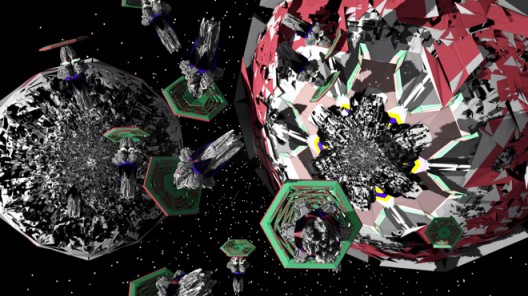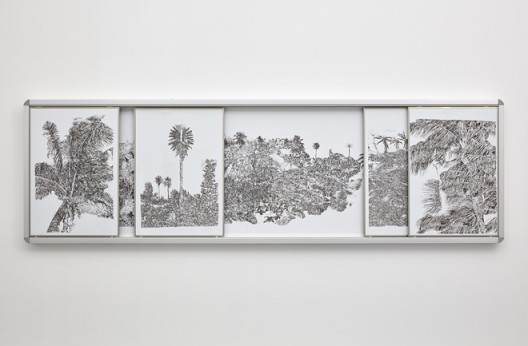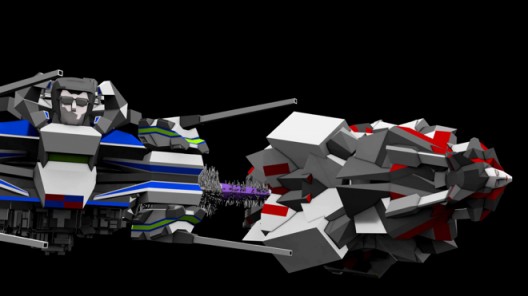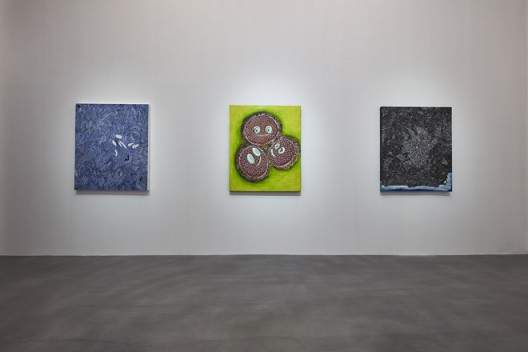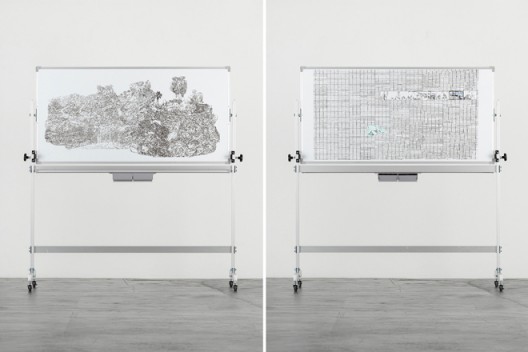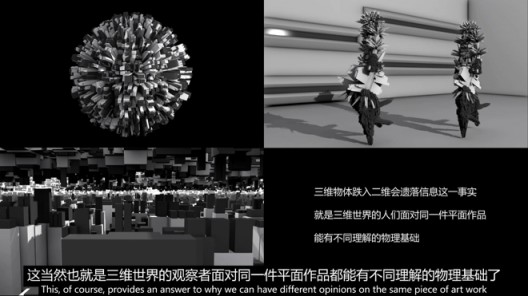Peng Yi-Hsuan “Impermanent Marks”
A+ Contemporary Art Center (50 Moganshan Lu, Shanghai), May 21 – Jul 4, 2016
The landscapes recorded with whiteboard markers by Peng Yi-Hsuan here are scenes of disaster reported by Taiwanese news outlets. Densely packed as they are with lines resembling textural strokes (cunfa), the viewer cannot be quite sure exactly what has tumbled onto the vistas—whatever they are. Aside from some clearly distinguishable branches and figures, one mainly noticed how many images are compacted together on the picture plane.
Disasters are the standard source when setting out to narrate dystopia. On one side, Chen Xi has opted to look into some popular scientific theories from the perspective of a sci-fi fan. His ideas about “painting in a reduced dimension” perhaps complement Peng Yi-Hsuan’s drawings. Whereas Peng “collapses” whatever is visible into not completely legible objects by means of contoured lines, for Chen, there is a specific reason why we have all kinds of interpretations and ideas about two-dimensional paintings: in the process of capturing the three-dimensional world, artists compress it into a flat space (a two-dimensional world) losing a certain “thickness” or depth in the process, and inevitably also a lot of data. Such a reduction of dimensions, for an information world, is some kind of disaster. In his “Painting Collapsing”, a computer animation plays out the crumbling of the information chain. Here, information has no way of drawing close to itself; moreover, changing chiaroscuro that would indicate the depth of objects has been banished; it has turned into a large, glimmering electric circuit module.
Are there differences on an internal level between the two kinds of disasters? Peng Yi-Hsuan’s marks portray disasters happening continually. His recording, as an observer, of events that have already happened and his wordless narration of the instability beneath his feet spell out how disasters might represent the spiritual state of our present condition On the other hand, Chen Xi’s “∞” (“Infinity”) refers to disasters between objects in an information world—events that happen every day as far as people who operate computers are concerned. His reflections on human sensorial activity through the lens of a quantity of information is a sort of microscopic perspective—intervening into artistic experience via issues of calculation and technique.
If disaster is said to be a theme of science fiction, then the disasters pointed out in this dual exhibition—the physical and psychological disaster of the quickening earth beneath one’s feet on the one hand, and the disaster of information collapse and sense-making on the other—could, perhaps, be attributed to divergent psychological attitudes towards science fiction between Mainland China and Taiwan (that “island nation”). Using a whiteboard marker, Peng Yi-Hsuan reflects on the fragility of objects under the full impact of nature; underlying this is an intimation that the present is the future refracted. Meanwhile, the focus of Chen Xi’s imagination on a non-human layer reflects the thinking and speculation of this generation of Chinese towards things like AlphaGo or possible technologies which have not yet been realized. As for science fiction: once that window is flung open, one feels that it is a peculiar one full of relevant discourses. Especially since Liu Cixin won the Hugo Prize (a science fiction prize) in 2015 for The Three-Body Problem [Santi], a country that had been practically without science fiction (in comparison, at least, with other socialist nations which had invested heavily in science-fiction narratives) has in the last few years been filled, suddenly, with zeal for the genre. As a sci-fi fanatic, one is glad to waver within these fantasies; as for how all this appears to the eyes of others, one can scarcely begin to explain. Even though there are misunderstandings, in any case, this writer remains outside them.


